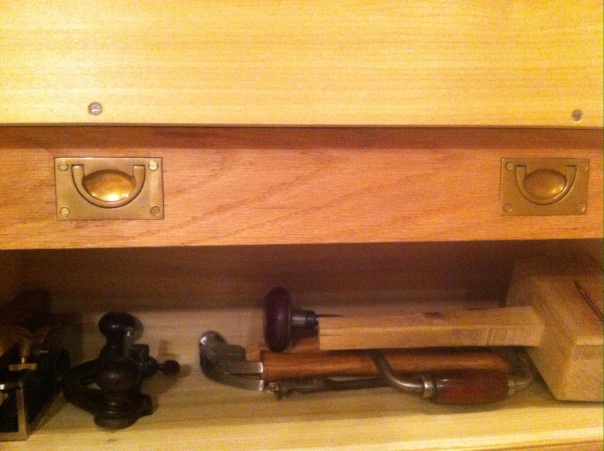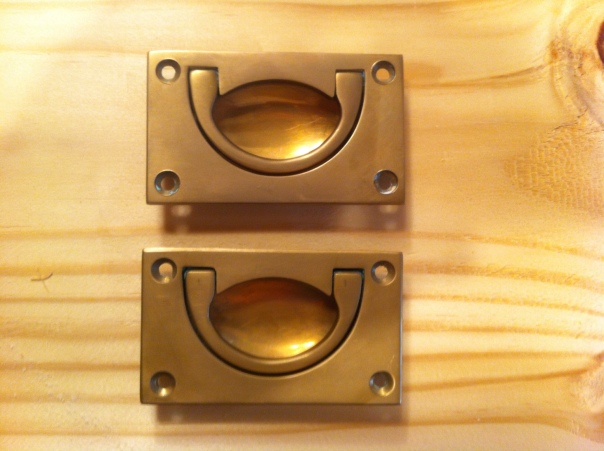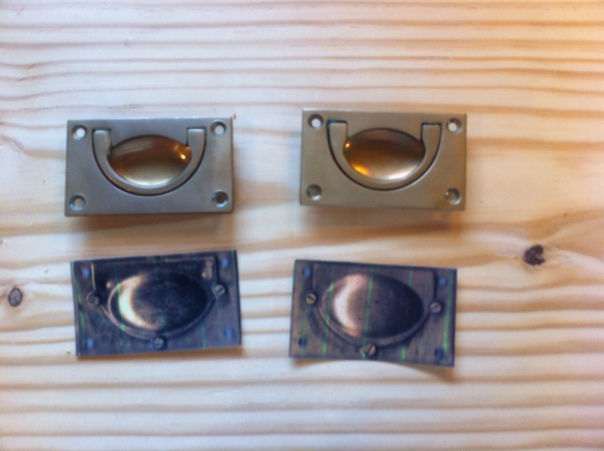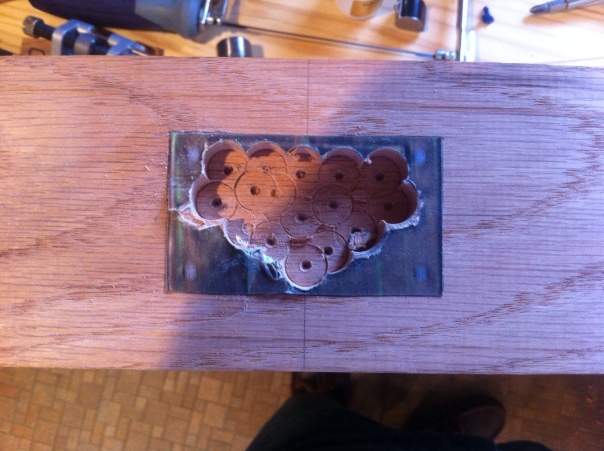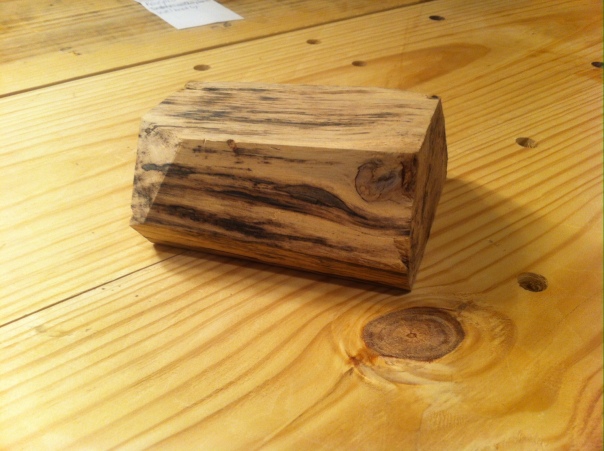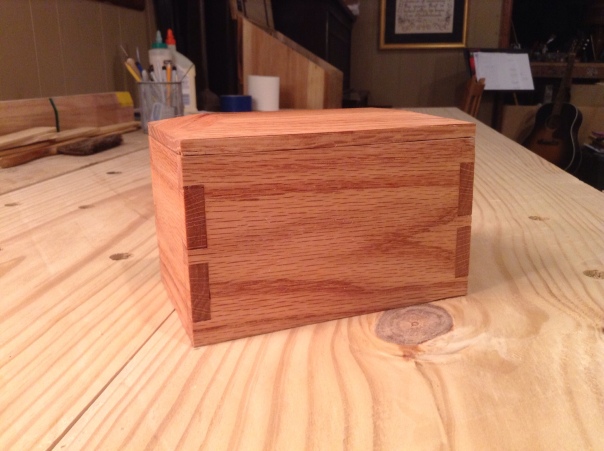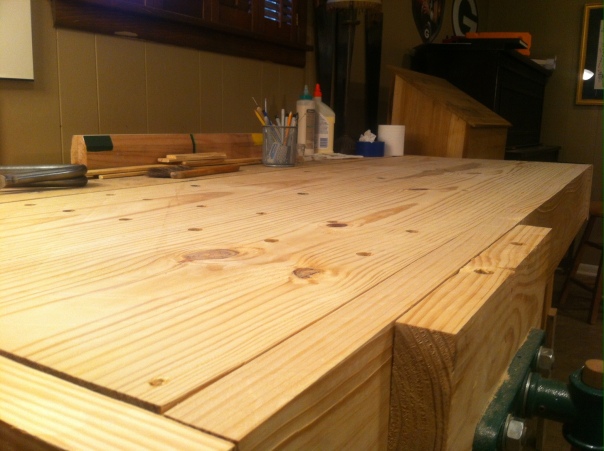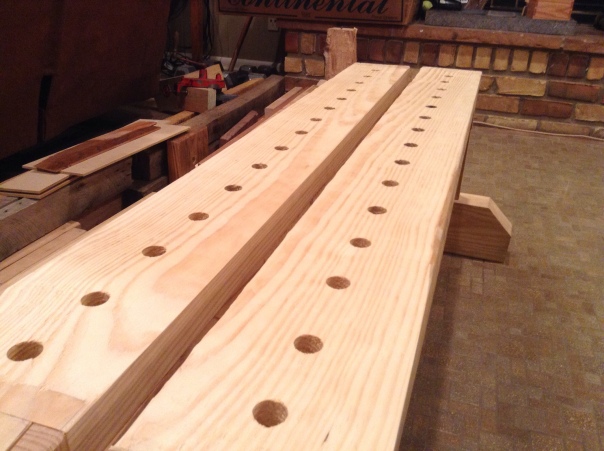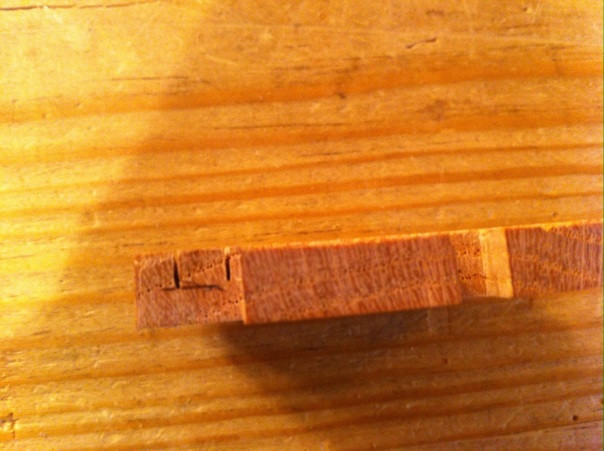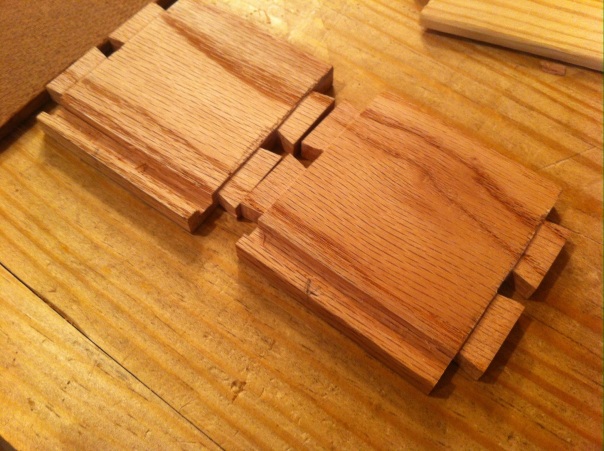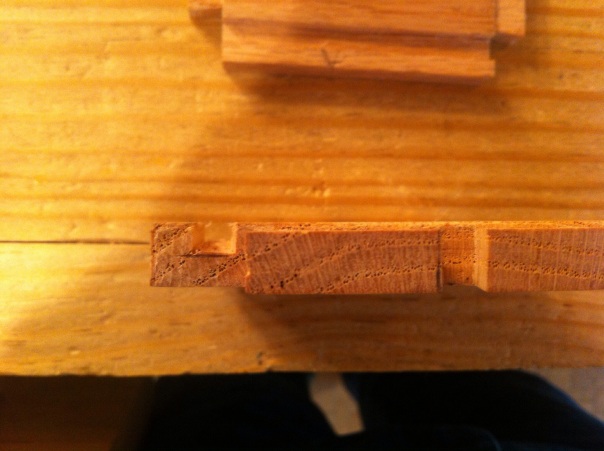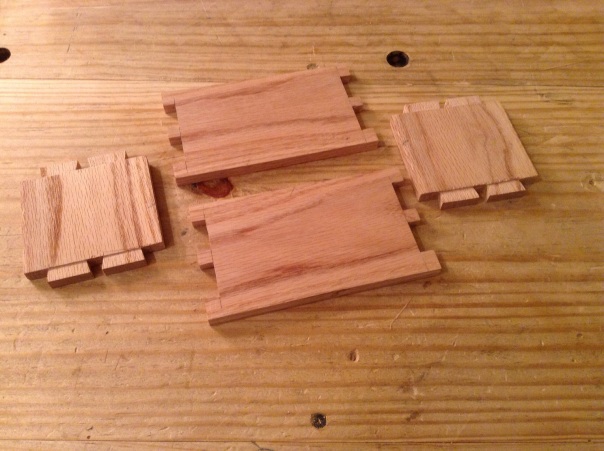WOW! It’s been a busy a few days in my shop. I’ve gotten a lot done. I lengthened the groove in each of the long side pieces, so that the corners of the bottom would fit. I also planed and smoothed the bottom a little more. Sat morning I glued the sides and bottom together.

Over the last few weeks I’ve been reading Handplane Essentials by Chris Schwarz. He writes several times about the advantages of a cambered iron for a jointer and smoothing plane. While my glue was drying, I sharpened my irons while adding a slight curve at the corners. It only takes a couple of thousandths on each side. This radius prevents the irons’ corners from digging in and leaving a plane track. Something you don’t want from a smoother for sure. I haven’t used my jointer much since then, but if it’s anything like the smoother, I’m sure it will be dramatic.
Once the sharpening was finished, if carefully positioned the blade so the camber was centered in the middle of the mouth. I then took a panel off cut from my first step stool, adjusted the blade to take a light cut and gingerly began to smooth this panel. Previously with this panel, I had a lot of problems with grain tear out and general unwillingness to plane. Not so now. The difference was dramatic. I’m not sure if you can tell from this picture, but the surface is as smooth as a baby’s bottom.
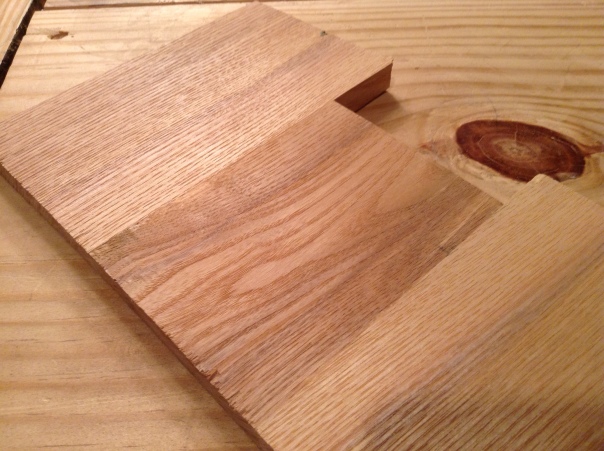 I was able to remove tear out and completely smooth both sides, without plane tracks. I was amazed. I then went to work on Kate’s small box.
I was able to remove tear out and completely smooth both sides, without plane tracks. I was amazed. I then went to work on Kate’s small box.
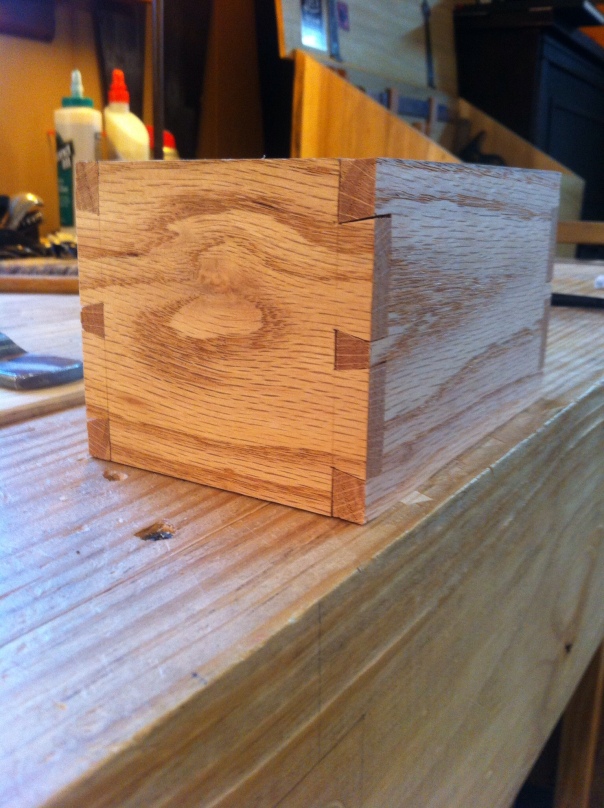 Same result. A near glass smooth surface with no track marks. It should finish up beautifully. I was able to smooth my tails and pins with no trouble at all.
Same result. A near glass smooth surface with no track marks. It should finish up beautifully. I was able to smooth my tails and pins with no trouble at all.
A little over a year ago when I began my hand tool adventure, my Pop gave me a Jack plane of his that he never could get to work. His heart was in the right place, but the plane is a piece of crap. Yet, I learned a ton about planes from it because I had to do so much to it to get it to work. So I felt pretty confident in my plane skills early on. When I bought Handsaw Essentials, I ordered Handplane Essentials based on Megan Fitzpatrick’s recommendation. I thought I might find a couple of good things in it. HA! I’m a goob. I now realize I know squat about hand planes. Buy the book, you’ll be glad you did. I am.
Next up for this project was a lid. And I wanted one you can take on and off easily and looks half way decent. I went with the idea of a rabbet on the inside to locate the lid appropriately and a small raised panel on the top. Sun I made it as far as the rabbet on the inside surface.

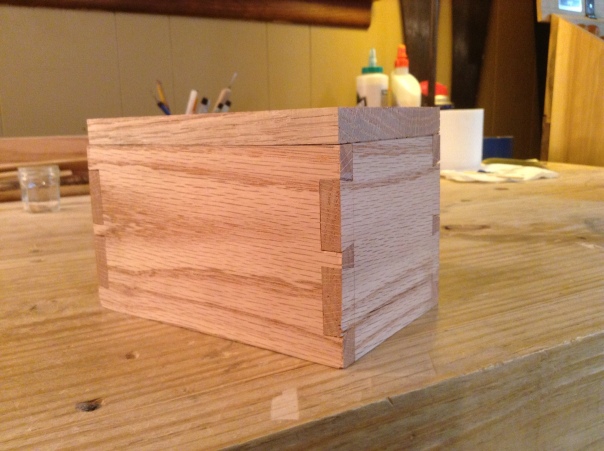 It also sits nicely on the box.
It also sits nicely on the box.
Fri was an especially nice day because I received some new tools from Lie-Nielsen, a large shoulder plane and two floats.
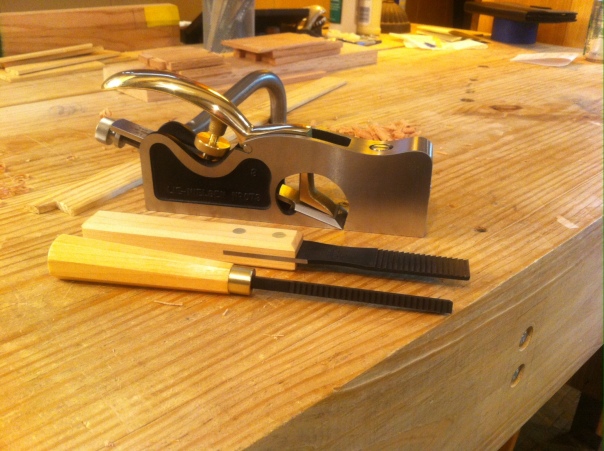 I haven’t had a chance to use the floats, but a little one for the shoulder plane. It’s a finely made tool, just what you would expect from Lie-Nielsen. I honed a small secondary bevel on the blade and tried it out on this lid. It’s easy to adjust and certainly squares up a shoulder and cheek. More later as I get additional time with it. Tomorrow I will raise a panel on the lid and hopefully wrap this project up in a couple of days. Stay warm, dry, and safe.
I haven’t had a chance to use the floats, but a little one for the shoulder plane. It’s a finely made tool, just what you would expect from Lie-Nielsen. I honed a small secondary bevel on the blade and tried it out on this lid. It’s easy to adjust and certainly squares up a shoulder and cheek. More later as I get additional time with it. Tomorrow I will raise a panel on the lid and hopefully wrap this project up in a couple of days. Stay warm, dry, and safe.
-Charlie
 And they turned out very well. I’m pleased.
And they turned out very well. I’m pleased. 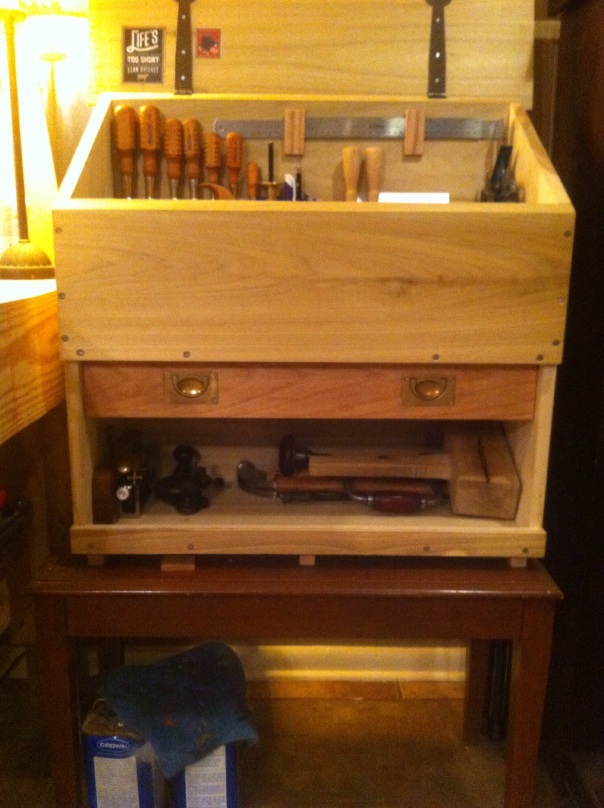 The only difference on the second pull was the amount of waste material I drilled out. I removed a lot more on this pull.
The only difference on the second pull was the amount of waste material I drilled out. I removed a lot more on this pull.  I just left a little material in the corners for the pull to attach to.
I just left a little material in the corners for the pull to attach to. 